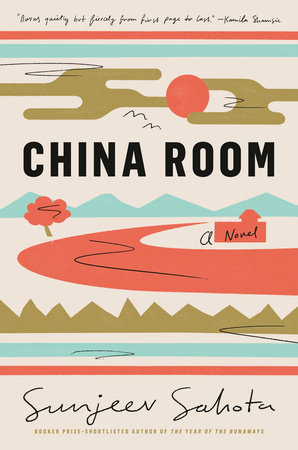Dual narratives intertwine in this mesmerizing tale of ancestry and endurance.

It’s difficult for me to write about Sunjeev Sahota’s sublime China Room with dispassion. I am an Indian American woman who thinks often of my ancestors, their struggles and hardships informing my own life choices. Sahota seems to feel the same connection, and his novel illuminates the lives of those hidden away by history and the passage of time.
“China Room” refers to a room at the back of a village home in Punjab, India, in 1929, where three young brides sit and work throughout the day, surveilled and tormented by their imperious mother-in-law, a memorably cruel personification of the internalized misogyny of Indian culture. The women — mere teenagers — have no idea which of the three brothers in the home is their husband, since they must avert their eyes during their nighttime conjugal visits in another small room of the house they all share.
Mehar, just 16 years old and promised to the family as a small child, must leave her beloved brother, never to see him again, when she marries one of the brothers. She proves a compelling character — precociously aware of her suffocating circumstances and helplessness. As Sahota describes, Mehar is “used to this life, to this small world of hers.”
Yet Mehar still grasps at the miserly offerings of joy around her. She enjoys the affection she shares with her new “sisters” and notes the simple beauty of her rural surroundings — how the moon “on the ground glimmers brokenly like a shoal of ghostly fish.” She is curious, wise, and courageous, and I found myself as besotted with her as are the two brothers who vie for her affection.
Though married to the oldest brother, Mehar falls in love with one of the younger ones, originally matched to her but switched at the last minute. This central conflict upends the family and reverberates three generations forward, when a young, drug-addled Indian man (never named) arrives in the same village in 1999 to overcome his addictions.
The interplay between the two primary characters is, at first, challenging. Mehar’s story is so captivating that I felt briefly irritated at having to move into the secondary story of the addict. But I soon lost myself in Sahota’s compelling universe. He has particular compassion for his female characters, and I delighted in both Mehar and the modern-day character Radhika, a young doctor who befriends the addict and who insists on living on her own terms. The two become poles in the same universe — one woman flattened by poverty, history, and patriarchy, the other defying them.
The novel also includes insight into the origins of the addict’s misery and crafts a subtle parallel between it and Mehar’s life. The addict recalls the way his own parents shouldered the burden and daily assaults of immigrant life in a small, racist town in England. At one point, he asks, “Why had they come here, to this broken white town? Had things really been so bad?”
Like many of us immigrant children, he feels protective of his parents but helpless. And that helplessness foments his drug-fueled self-destruction.
The final pages of China Room feel like a slow punch in the chest. And Sahota includes an uncaptioned photograph at the end of the book — an old woman holding a baby, which I later learned is the author’s great-grandmother carrying him as an infant.
He provides no further explanation, and none is necessary. We all come from ancestors whose seemingly unendurable suffering enabled us to live our present lives. Sahota suggests that by unearthing their stories, we confront our individual and collective intergenerational pain.
In learning Mehar’s story and the story of the China Room, the young addict finds a purpose beyond his next fix and notes at the end of his time in Punjab, “I glimpsed a future and was overcome by a sudden feeling that things would be different…that I would never use again, that I would go to London, make friends, have lovers and forge a life of my own choosing.”
Sunjeev Sahota intimates that such self-determination is how we best honor our ancestors — their pain, sacrifices, and desires thwarted by history and injustice.
Samantha Rajaram is the author of the historical fiction novel The Company Daughters (2020) and a professor of English in the Bay Area.

